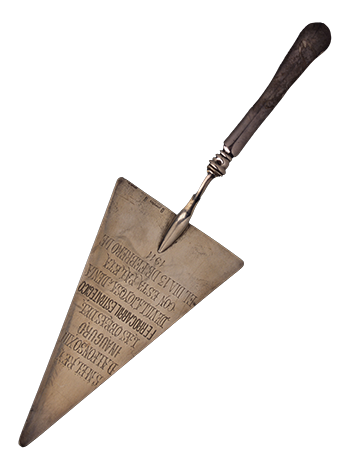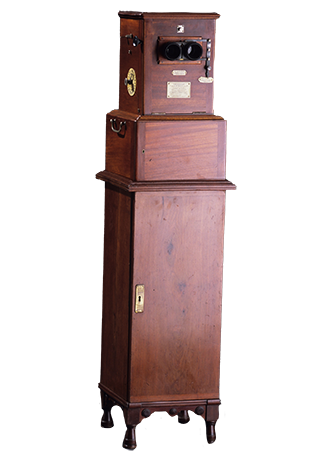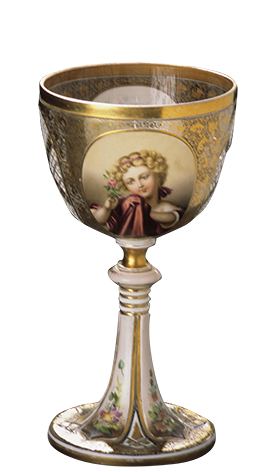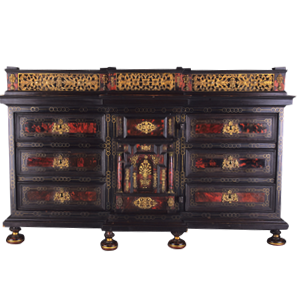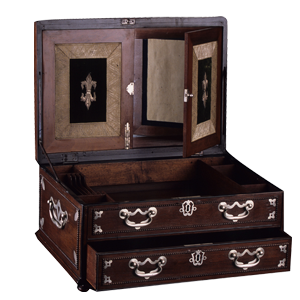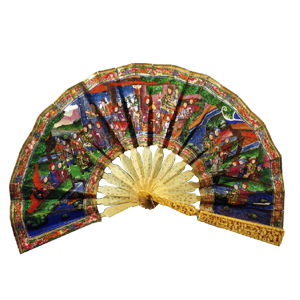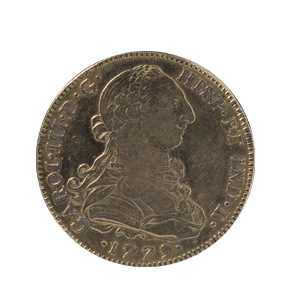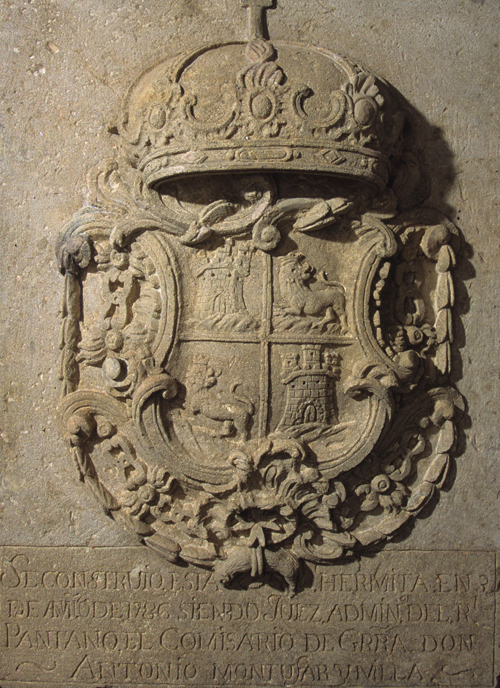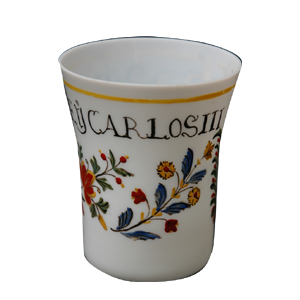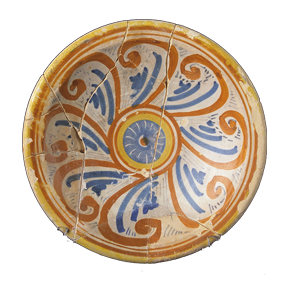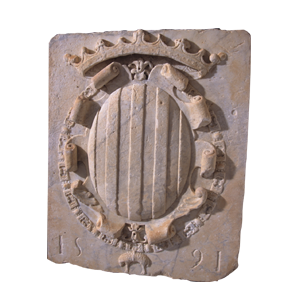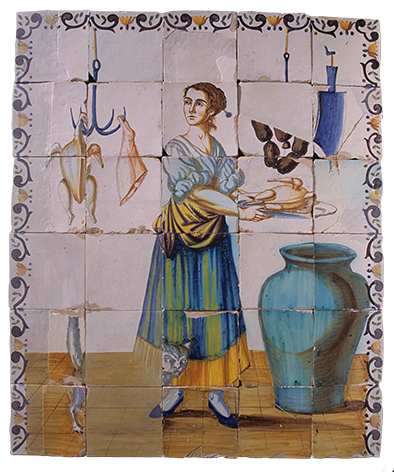
Ceramic kitchen panel
Collection Historical Collection Ceramics Each tile: h: 19.5 cm; w: 19.5 cm; h: 1.8 cm Panel: Height: h: 118.5 cm; w: 87 cm; h: 1.8 cm Late 18th century
Ceramic panel depicting a standing female figure with her head turned to her right. In her hands, she holds a plate with a plucked and decapitated bird. She is wearing a yellow falbala and a green-toned foot-covering, a white linen shirt rolled up with a white neckerchief crossed at the front and a red scarf. The yellow apron is gathered at the waist. He wears cobalt blue high-heeled leather shoes and white stockings. Her braided hair is tied up in a bun and held in place by a needle. She wears long earrings. To the right of the figure, on the floor, is a large greenish-blue jar. On the wall, hung from a bracket is a butcher's axe and from a rope hangs an anchor-like hook (part of the drawing has been lost) from which strings of blood sausages hang. On the left, at the feet of the figure, there is a cat whose head, hind legs and tail are preserved. On the wall, an anchor-like hook holds a plucked bird and a pig's foot from its head. The scene is surrounded by a simple border at the top and on the right side, where the lower half has been cut off (about 3.5 cm), as is the case on the left side where the last row of tiles has been cut vertically (about 10 cm). The lower half must not have had such a border.
This panel is accompanied by another similar one showing a male figure holding a horchatera or canteen containing a liquid such as lemon water or water, on a wooden table for cutting meat. At his feet, a dog licks the drops of blood that fall from the rabbit hanging from a bracket. A couple of frying pans and a string of sausages are also hanging. On the left, a bench with a small saucer containing four glasses closes the scene, which is surrounded by a similar border, which here is complete except for the lower side, where it is missing. Both panels consist of 30 tiles that are numbered on the back in black. They also have a mark to the left of the number that prevents confusion between tiles. In the first panel, the mark is a kind of "V" in the upper corner of the tile. In the second, a '3' stuck to the left side of the tile. Some of the numbers are underlined. The last tile, number 30, is underlined twice, possibly as an indication that it is the last one, which leads us to believe that the border on the lower side did not exist. The missing fragments and tiles have been volumetrically and chromatically restored where possible. The dog's head, which appears with the male figure, looks like that of a pig and does not fit well with the rest of the body. The fact that it bears the same mark on the back leads us to think that the piece was broken in the workshop or when the panel was assembled and was immediately remade, but no longer in keeping with the drawing of the scene as a whole. Both panels show a very careful drawing, outlined in manganese and of great quality in the execution of the whole scene.
FLORES ABAT, M. A., 2001.
Highlights of the Modern Room
- ................................................. Sánchez de Prado Collection Mahogany wood, glass and metal h: 124.5 cm; w.: 32 cm; d.: 32 cm Early 20th century 32 cm; w: 32 cm Early 20th century
- ................................................. Collection Historical Collection Ceramics Each tile: h: 19.5 cm; w: 19.5 cm; h: 1.8 cm Panel: Height: h: 118.5 cm; w: 87 cm; h: 1.8 cm Late 18th century
- ................................................. Beltrán Ausó Collection Glass h: 27,9 cm; w: 14 cm 19th century
- Beltrán-Ausó Collection Ebony, walnut, applications in lemongrass, pine, bronze and tortoiseshell h: 106.5 cm; w: 66 cm; h: 37 cm Eighteenth century
- ................................................. Beltrán-Ausó Collection Mahogany wood, ebony and silver h: 36.5 cm; w: 28 cm; h: 52.5 cm 1751
- ................................................. El Sotanillo (Alicante) Paper, bone and canvas h: 35 cm; w: 19.5 cm 19th century
- ................................................. Treasure of San Juan de AlicanteOrod: 3'72 cm; p: 27'01 gr; p.c.:12 h.Modern Age.1779
- ................................................. El Sotanillo (Alicante) Stone H: 108 cm; W: 77'7 cm; thickness: 33'5 cm Modern period Year 1786
- ................................................. Beltrán Ausó Collection Glass. Mould blown and worked to the point h: 11cm; w: 9 cm; h: 6.5 cm Real Fábrica de Cristales. 18th century.
- ................................................. El Sotanillo (Alicante) Ceramic h: 17.6 cm, w: 3 cm: 3 cm Montelupo workshop (Italy) Mid-16th century
- ................................................ Casa del Rey, Alicante Marble h: 85 cm; w: 71cm; d: 11 cm Year 1591

